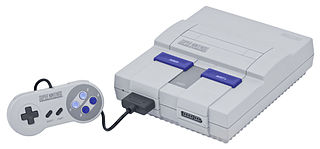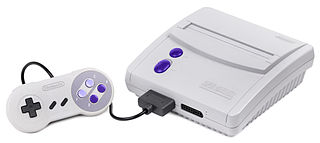Difference between revisions of "SNES Capture"
From SDA Knowledge Base
(Created page with "Content will go here.") |
|||
| Line 1: | Line 1: | ||
| − | + | == Console Information == | |
| + | [[Image:Snes.jpg]] <br /> | ||
| + | {| class="wikitable" | ||
| + | |+Nintendo Entertainment System | ||
| + | |- | ||
| + | |'''Resolution''' | ||
| + | |240 | ||
| + | |- | ||
| + | |'''A/V Outputs''' | ||
| + | |S-video,Composite, RF | ||
| + | |- | ||
| + | |'''Framerate''' | ||
| + | |60.0988 progressive/30.0494 interlaced [https://forum.speeddemosarchive.com/post/important_analog_capture_frame_rates_and_mysterious_gained_seconds.html More Info] | ||
| + | |- | ||
| + | |'''Models''' | ||
| + | |SNES, SNES-101 (SNES Jr) | ||
| + | |} | ||
| + | |||
| + | == A word of caution == | ||
| + | The Super Nintendo (all models) outputs a video signal that is 240 lines of resolution. Recording this should not be a problem if you are using a standard definition capture device (one that only has composite/S-Video inputs) or a DVD recorder. You may run into problems if you are using a capture device that is designed to record high definition footage to try and record video from your NES. Most high definition video capture devices do not support video resolutions that are this low. Unless your high definition capture device explicitly lists support for 240 lines of resolution, it is safe to assume that it will not be able to record video from the SNES and you will need a standard definition capture device to record the footage. Two commonly used capture devices that support 240 lines of resolution are the Dazzle DVC100 and the Ez-Cap. | ||
| + | |||
| + | == Super Nintendo Entertainment System (SNES) == | ||
| + | |||
| + | The standard Nintendo Entertainment System contains audio and video two video outputs, RCA Composite and RF. Use the composite video output and do not use the RF output. The RF video outputs an inferior quality signal and the video will contain vertical lines affectionately nicknamed jailbars. The NES also features one RCA audio connector (the red plug). There isn't another connector for the white RCA audio connector plug because the NES only supports one channel of audio. | ||
| + | |||
| + | The standard Nintendo Entertainment System suffers from some problems loading games successfully after they are inserted into the console. These problems have a variety of causes, from the console's 72 pin connector to its game lockout chip. For help with NES maintenance and troubleshooting, [http://www.hardcoregaming101.net/nesmaintenance/nesmaintenance.htm Hardcore Gaming has provided a helpful tutorial] | ||
| + | |||
| + | |||
| + | ==SNES-101 (SNES jr) == | ||
| + | [[Image:Snes2.jpg]] <br /> | ||
| + | |||
| + | The redesign of the NES offers some dramatic improvements in the reliability of loading games, but takes a major step back in video quality. The NES-101, also known as the top loader or the NES II featured a new top loading system for inserting cartridges. The NES II also uses a new and more reliable 72 pin connector. Nintendo also eliminated the lockout chip. These improvements allow the top loader to successfully load games much more consistently than the standard NES. Unfortunately Nintendo eliminated the Composite Video output. The only video output the top loader has is RF. | ||
| + | |||
| + | It is possible to modify the NES Toploader to add composite video output and RCA audio out. This will allow for the Toploader to output video and audio that is of the same quality as the original NES. This modification is acceptable by SDA's rules. You can perform the modification yourself by following [http://www.gamesx.com/rgbadd/nes2avmod.htm the steps here.] There are people online that will do it for you for a [https://forum.speeddemosarchive.com/post/offering_nes_top_loader_av_mod_service.html reasonable price] | ||
| + | [[Image:TopLoaderMod.JPG|frame|middle| A modified NES toploader]] If you absolutely cannot get your NES Toploader modified, you can use a VCR to convert the RF signal to a RCA composite video and audio outputs. Connect the RF input from the console to your VCR and then connect your RCA cables to the A/V out section of your VCR to your splitters or DVD recorders. The quality of your footage will suffer because of this. <br /> [[Image:Jailbars.JPG|frame|left| A sample of the vertical lines or jailbars you get with RF video]] | ||
Revision as of 10:40, 17 May 2013
Contents
Console Information
| Resolution | 240 |
| A/V Outputs | S-video,Composite, RF |
| Framerate | 60.0988 progressive/30.0494 interlaced More Info |
| Models | SNES, SNES-101 (SNES Jr) |
A word of caution
The Super Nintendo (all models) outputs a video signal that is 240 lines of resolution. Recording this should not be a problem if you are using a standard definition capture device (one that only has composite/S-Video inputs) or a DVD recorder. You may run into problems if you are using a capture device that is designed to record high definition footage to try and record video from your NES. Most high definition video capture devices do not support video resolutions that are this low. Unless your high definition capture device explicitly lists support for 240 lines of resolution, it is safe to assume that it will not be able to record video from the SNES and you will need a standard definition capture device to record the footage. Two commonly used capture devices that support 240 lines of resolution are the Dazzle DVC100 and the Ez-Cap.
Super Nintendo Entertainment System (SNES)
The standard Nintendo Entertainment System contains audio and video two video outputs, RCA Composite and RF. Use the composite video output and do not use the RF output. The RF video outputs an inferior quality signal and the video will contain vertical lines affectionately nicknamed jailbars. The NES also features one RCA audio connector (the red plug). There isn't another connector for the white RCA audio connector plug because the NES only supports one channel of audio.
The standard Nintendo Entertainment System suffers from some problems loading games successfully after they are inserted into the console. These problems have a variety of causes, from the console's 72 pin connector to its game lockout chip. For help with NES maintenance and troubleshooting, Hardcore Gaming has provided a helpful tutorial
SNES-101 (SNES jr)
The redesign of the NES offers some dramatic improvements in the reliability of loading games, but takes a major step back in video quality. The NES-101, also known as the top loader or the NES II featured a new top loading system for inserting cartridges. The NES II also uses a new and more reliable 72 pin connector. Nintendo also eliminated the lockout chip. These improvements allow the top loader to successfully load games much more consistently than the standard NES. Unfortunately Nintendo eliminated the Composite Video output. The only video output the top loader has is RF.
It is possible to modify the NES Toploader to add composite video output and RCA audio out. This will allow for the Toploader to output video and audio that is of the same quality as the original NES. This modification is acceptable by SDA's rules. You can perform the modification yourself by following the steps here. There are people online that will do it for you for a reasonable price
If you absolutely cannot get your NES Toploader modified, you can use a VCR to convert the RF signal to a RCA composite video and audio outputs. Connect the RF input from the console to your VCR and then connect your RCA cables to the A/V out section of your VCR to your splitters or DVD recorders. The quality of your footage will suffer because of this.


